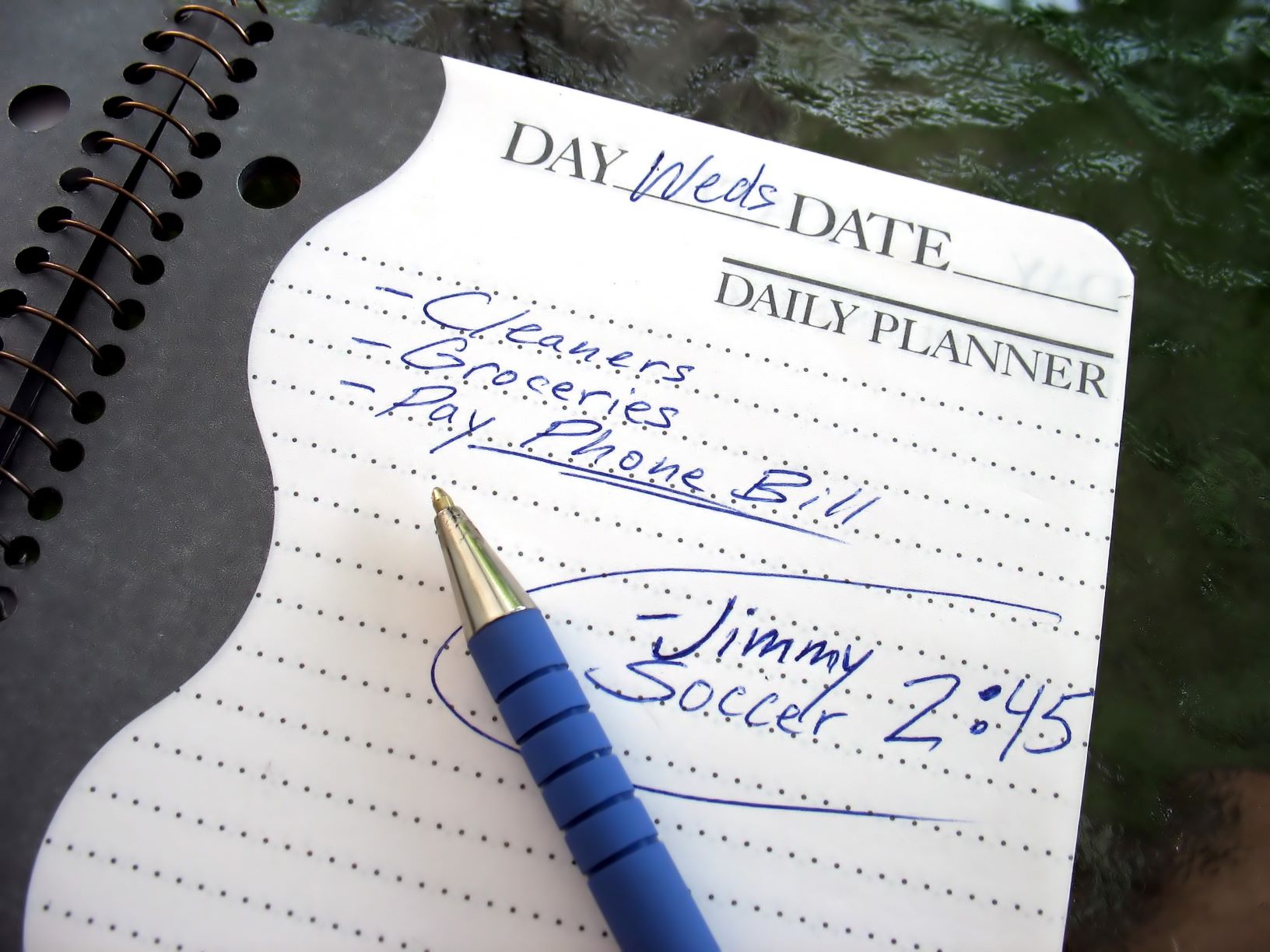Tag: Budget
How to Cut Down on the Cost of Owning a Car
February 15, 2024

In 2023, the average cost of owning a new car was $12,182 a year or $121 a month according to AAA. In addition to car payments, insurance, and maintenance costs, the price of gas is $5 a gallon,, which means that most U.S. households will spend $2,750 on gas per year. “If you are living paycheck to paycheck, it could put you over the edge,” says Ivan Drury, senior manager for Edmunds.com, a car shopping site. “But even if you are not, it’s very emotional. It’s in your face twice a week.”
The good news is that by cutting your expenses in other areas, such as with car insurance, you can save money and make up for the added charges at the pump. Besides simply driving less, which isn’t an option for many people, here are a few ways to make car ownership more affordable.
1. Shop Around For Car Insurance
According to J.D. Power, only 1 in 7 drivers changed auto insurers last year, but shopping around for lower premiums could save you a lot of money. In addition to your location and the type of car you own, other factors affect your rates, including your age and credit score. If you’ve improved your score within the last year, this one factor may lower your car insurance bill.
You can collect quotes through an insurance agent or use an online search engine, such as Experian, who claims to have saved drivers an average of $961 a year or $80 a month in 2021. Calling around or doing a quick search takes only fifteen minutes and could shave a lot of money off of your premium.
2. Check For Discounts and Adjust Your Existing Policy
Your existing carrier may offer discounts you don’t even know about, such as for paying your bill online and in advance. According to Zebra, paying your bill early online saves the average customer $170 a year. Bundling insurance policies, such as combining your homeowners and auto insurance, is another way insurance companies incentivize their policies through discounted rates.
There are usually three types of coverage on any given insurance policy, including liability, collision, and comprehensive. While most states require drivers to carry some amount of liability coverage, eliminating collision and comprehensive coverage could save you up to $900 a year. You may also opt to lower your car insurance premium by raising your deductible from $500 to $1,000. This makes sense if you don’t have a new or expensive car and can afford to pay the deductible if anything were to happen.
3. Outside Financing And Refinancing
One of the smartest ways to avoid high interest rates on a car payment is by securing outside financing. Compared to what the dealership will offer you, this can save you a ton of money in interest alone. Your local bank or credit union can help you shop around for the best offer. If you already have a monthly car payment, the next best thing to do is to look into refinancing your loan. Drivers who benefit the most from refinancing are those who have improved their credit score since initially securing their loan.
Of course if you can purchase a car outright, avoiding any kind of financing is always the very best option. If it’s possible for you to stick to a budget and save up, you may even be able to negotiate a better deal on the purchase price of your desired vehicle. Forty percent of the cost of owning a car is actually depreciation, which can equal more than $3,000 annually. That means that buying a gently used car is a great deal, without the rapid decline in value.
4. Sell One of Your Cars or Trade it Out
If you have a luxury or oversized vehicle, then trading your vehicle or a more practical car is always an option. Once you have a simpler car, you’ll save money on gas, insurance, and even maintenance costs. “Less fancy cars are more reliable,” says editor of Autotrader Brian Moody. “They have fewer gadgets.”
If your family has more than one car, then you may be able to sell one of them and end up saving a lot of money every month. Many families find that they adjust to sharing a vehicle, and when you need your own car for some reason, using Uber or Lyft periodically may still cost less than owning a vehicle.
5. Save on Gas
Nearly twenty percent of the cost of car ownership comes from fuelling up. Unless your vehicle requires premium fuel, save by filling up with regular gas. You may also choose to slow down as gas mileage increases at lower speeds. If you can, try driving less, such as by walking to close destinations or starting a carpool for work. If you are able to get your annual mileage below 7,500, then your insurance company might even give you a discount on your coverage for that too.
6. Save up for Maintenance
The cost of vehicle maintenance is equal to fourteen percent of the total cost of owning a car. By keeping up on routine maintenance and using synthetic oil, you will avoid more expensive issues down the road. When a large repair does arise, always call around to get quotes and go with the best deal. Since emergencies happen, setting up a sinking fund for unplanned car expenses is always a good idea. By putting away only $83 a month, you’ll save up $1,000 a year, which could be used for an unforeseen mechanic bill. “You could set aside money every week,” suggests Lauren Fix of Car Smarts. “Then the money will be available rather than using a credit card at a high interest rate.”
The less money you spend on your car, the more you’ll have for other expenses in your life, from groceries to vacations. With Insureyouknow.org, you can store all of your vehicle and financial records in one place. That way when it’s time to refinance, shop around for better insurance, or sell your car, everything you need will already be at your fingertips. There’s never a good reason to throw away your hard-earned money on unnecessary expenses.
Saving for Your Next Vacation is Easy With a Plan
November 15, 2023

With world oil prices up, so is the cost of everything else. And now that interest rates are on the rise in an effort to combat inflation, hotel prices have risen by ten percent at many popular destinations. The benefits of traveling though are not worth foregoing due to rising costs. Travel is beneficial to your mental health by helping you feel calm and relieving stress and tension. With a little bit of creativity and determination, anyone can save up for a vacation and even get a great deal on travel costs.
How to Save for a Yearly Vacation
The best way to save for a vacation is to plan for it. If you have a specific trip in mind, start thinking about how much it will cost. Then create what is known as a sinking fund. If you think your vacation a year from now is going to cost $2,400, then put away $200 into an account every month. In a year’s time, you would have what you need for that vacation. If you continued the habit, then you’d have that vacation money saved every year.
When bills come in and unexpected expenses pop up, it can become difficult not to dip into your savings. This is why it’s important to keep your vacation account or sinking fund out of reach. Set up an automatic transfer for your savings every month instead of relying on yourself to transfer the money when you get paid. Gaby Dunn, author of Bad With Money, advises separating your money from your general savings so that you don’t use it for a different expense. “It’s also a good idea to open a specific account just for your vacation fund,” she suggests.
Once you’ve determined how much you’ll need to save, it then becomes time to get serious about sticking to a budget. “Many times, people will design their vacation and then attach dollars to it,” says Jesse Mecham, the founder of You Need a Budget. “But it’s better to come up with a reasonable number first, then whittle away at it when you start planning the trip. The reality is that we have only so much money.”
Budgeting really becomes about determining where you’re wasting money and where you can save money. Here are five easy ways to save for your next vacation::
- One of the best ways to cut back on spending is to eat out less often and cook more meals at home. “Anyone I’ve talked to who has saved up a lot of money or paid off a lot of debt has cut back on eating out,” says Mecham. “Learning how to meal plan has been the overarching approach that has worked.” It might take some getting used to, but meal planning on the front end of your week can save a lot of money in the long run that you can put toward your travel budget.
- Study your spending habits and cut back on buying unnecessary items. It might be coffees to-go, books that could have been borrowed from the library, or impulse clothing purchases. Notice your spending weaknesses and then get disciplined about avoiding those temptations.
- You may have some sneaking subscriptions to streaming services, apps, or memberships that you’re not using often enough to make them worth the added strain on your budget. Take an inventory and see which subscriptions you could go without. The twenty or so dollars you’re spending a month on something you’re not even using could easily go toward your sinking fund instead.
- Savings account interest rates are often higher with online banks than brick and mortar banks. Kelly Johnson of the travel blog, Snap Travel Magic, suggests finding the highest-yield savings account. Then, “Put 5% of each paycheck,” she advises,
directly into the account.” - Use credit cards that reward you, whether it’s a bonus sign-up offer, regular cash back percentages on money spent, or points that can be put toward travel expenses. “Many credit cards offer sign up bonuses in which you can earn free cash back, extra airline miles and travel points for spending a certain amount of money within the first few months of account opening which you can use to cover a big portion of your travel expenses,” says shopping consultant Andrea Woroch.
The most important thing when it comes to saving for your travel goals may be to stay motivated. Keep in mind why you’re budgeting by placing a picture of your desired destination somewhere you look often or making it the background image on your phone or computer. This way, if you’re tempted to make a purchase through your phone, you’ll be reminded of why you’re working so hard to save money for your dream vacation.
How to Get the Best Deals on Travel Costs
If you’re willing to be flexible with where you travel to, there is another way to score inexpensive tickets. Companies such as Scott’s Cheap Flights and Secret Flying allow you to seize temporary deals. By entering your home airport into Google Flights, choosing a desired departure date, and leaving the destination blank, people can find startling low prices on round trip tickets. This is not to say you should forego your dream trip for a deal on plane tickets. This is just one strategy to consider if you’re more in need of a break than of an actual place you have in mind.
Knowing how to avoid the high season in certain places is an artform worth mastering. Besides dealing with less crowds on your vacation, you can also take advantage of lower prices on almost all of your costs. While school schedules affect peak travel times, time off varies depending on the location. The ideal time in most places is likely going to be in between seasons or “shoulder season,” such as May in tropical destinations and October in colder places, including Europe. A little research will tell you when it’s best to travel to the destination you have in mind.
Next, shop around and compare the prices of hotels and rental properties. For instance, the advantage of having a kitchen in a rental may vary widely based on where you’re going. In some places, it will be less expensive to eat out than to cook and vice versa. Whichever you choose – hotel or rental – pay close attention to reviews, especially with Airbnb, where only travelers who have stayed there are allowed to leave a review.
How to Save Even When Traveling
Once you’ve worked hard saving up for a trip and doing your research to get the best deal on transportation and lodging, you’ll want to avoid getting caught up in the moment on your trip and go crazy with frivolous spending. The biggest trap people fall into is the cost of meals on vacation.
One way to avoid overpriced dining is to eat where the locals do. Walking fifteen minutes in any direction out of the city can make a huge difference. Not only will you spend less at restaurants, but you’ll have a more authentic dining experience. Asking the locals for suggestions is another best practice to find places to eat, as most people will love the opportunity to share their recommendations.
Just as in avoiding the peak time to travel somewhere, the same goes for restaurants. Making reservations a little earlier or later than when everyone else is will cut down on the costs of that meal, as many restaurants provide specials outside of peak times. Another way to budget is to plan on one splurge meal a day. If you eat a light breakfast and grab a small lunch on the go, then spending more on dinner won’t feel as glutiness.
Beyond eating, be open to free activities, and again: do your research ahead of time. There are many museums that offer free or reduced admissions on certain days and times. Then there’s the gardens, parks, and general sightseeing that are always free-of-charge. Always check for local markets to get a taste of local fare and the unparalleled experience of people-watching in a new place.
Getting serious about saving money for travel will also help you to get your finances in tip-top shape and make the most out of your money in your everyday life. While you keep your eye on your goals, Insureyouknow.org can help you stay organized by storing all of your financial records, budgets, and plans in one place. Making a plan and sticking to it will be well worth it when you have the means to take a well-deserved holiday, perhaps even more than just once a year.
a DIME a dozen
December 15, 2019

definition: very common and of no particular value.
In 1930, the DIME was valuable. “For 10 cents, kids could spend an afternoon in a movie theater. We could buy a loaf of Bond Bread or a snack-size Frisbie pie, or ride the trolley car. And for a dime, people could walk into a tavern and get a cold glass of draft beer.” Today – the US currency has little value associated with the penny, nickel, dime and quarter – we focus on the dollars! Differentiating ourselves and our work is key – people and blogs are a DIME a dozen. With this in mind – I challenge us to review the acronym DIME. It is utilized to calculate the recommended amount of life insurance, but can also help you understand if you and your family are in a good space for 2020 and beyond.
D is for Debt
How much debt do you have? Your debt standing is defined by the amount that you owe to anyone for anything. The most common debts include – car loans, student loans, and credit cards. Buying items on credit card doesn’t mean that the resources are always available to cover the costs, and the holiday season sees the usage of credit cards increase exponentially to cover the “great deals” during Black Friday and Cyber Monday in preparations for Christmas, Hanukkah, and New Year celebrations. Mortgage payments are covered under M.
When you have totaled the debt amount – do you have the assets available to cover the debts or would your family need to find the resources to pay this in an emergency? This amount would be the base number for your life insurance policy.
I is for Income
What is your income? Your income is defined by the money that is coming in – and is the number that is utilized when filing taxes. The most common income streams include – salary (yours and your partner), interest (from saving accounts/401K), and dividends (stocks and bonds). Everyone has an income – whether it’s from a business or rental properties, or your Social Security checks.
When you have totaled your income amount – multiply this by 10. This is considered a good number to have as a resource for 10years if your income source was to disappear. Many times this happens when you retire. This amount is also a value for calculating the amount of life insurance you may want to purchase
M is for Mortgage
What is your mortgage payment? Your mortgage is defined as how much you owe on your home AND any other properties that you own. Renters are advised to multiply rent by 10 to find this number.
When you have totaled this amount – this is another expense that will need to be covered to ensure you and your family have a place to live. Life insurance can assist with this payment when you are unable to.
E is for Education or Emergency“What did the dime say to the penny? At least I have more cents than you.” If you have children or grandchildren, the gift of education would be a worthy investment for future generations. To keep things simple – the $100,000 figure has been suggested which could be used for private education in the K-12 or University level – PER person. If there are no juniors, the E can represent your emergency fund. $100,000 for yourself and partner is a base figure that would cover a critical illness or weather disaster. Now that you have read this blog, and know the DIME formula – take the next step and review your personal numbers. As Ralph Waldo Emerson said – The whole value of the dime is in knowing what to do with it. Insureyouknow will help you track these numbers and see how they change year over year – and how close you are to achieving the magic number. Whether you choose to purchase life insurance or not, the Insureyouknow tool is a place to store your digital documents to access from your home or on-the-go.
Where have all the seasons gone?
October 1, 2019

There was a time when Spring, Summer, Fall or Autumn, and Winter meant something. When there was anticipation for the new season to begin – the atmosphere, air, environment and weather gave us clues that change was coming. Now we hear that Fall is coming, we see the days on the calendar getting closer to the Fall months, we see the signs and promotions in the stores, the Pumpkin flavored beverages are available – but it doesn’t feel like Fall. For those of us living in the northern hemisphere – it’s not easy to know when Summer ends at and Fall begins – it creeps upon us until the day that we need to leave the home with a jacket and we exchange the shorts for long pants.
When we read definitions – the division of the seasons is defined as:
- Spring runs from March 1 to May 31;
- Summer runs from June 1 to August 31;
- Fall (autumn) runs from September 1 to November 30; and.
- Winter runs from December 1 to February 28 (February 29 in a leap year).
For those of us in Texas, there’s hot and there’s heat-advisory hot and we are in October and thought of a jacket hasn’t even crossed our mind. Fall may begin in November and last thru January; Winter may be for 6 weeks – February thru mid-March. For those in the Canadian states, there’s winter and not-quite winter. Jackets are a necessity for the majority of the months. The definitions doesn’t apply for us. But there are some traditions that despite the atmosphere, environment and weather, we continue to embrace such as the Pumpkin Spice Latte (and the other drinks on the secret Starbucks menu), falling leaves and boots.
All joking aside though, in North America – we have also added some seasons to the traditional 4 – Hurricane Season, Wildfire Season, Flood season, Mudslide season, Tornado season. Many of these overlap and occur in different parts of the country.
– Hurricane season is split by geography. “The Atlantic hurricane season runs from June 1st to November 30th, and the Eastern Pacific hurricane season runs from May 15th to November 30th” This is about 6 months of the year.
– Wildfire season in the Western United States – such as California – which can last up to 7 months of the year.
– Flood season – varies across the country and can be throughout the year. In early Spring there is flooding in the northern United States as the snow melts from the Winter months. In Summer and Fall – tropical storms cause flooding in the Southern/Coastal states. Flash flooding can occur during any season.
– Mudslide season is another season that impacts the Californians. Usually post wildfire, or after storms, the mudslides cause multiple casualties and destruction due to the quick, unpredictable timeline. In 2018, the news was focused on the Southern California mudslides.
The world is changing, our environment and weather is changing. But there are ways to keep the memories and documents safe and consistent. Insureyouknow has a tool to uncomplicate life – that is available in any season. It that can be utilized to digitally store all the information in case you need to access it remotely – or from the comforts of your own home. Whether it’s too cold outside to access your safe-deposit box, or too hot to venture into the garage – an insureyouknow subscription will allow you remember the seasons past.
Until next time – Here’s a song from the Netflix studio about the standard seasons – a jingle to keep in your head as you wonder where the seasons are.
Not Quite Yet… Back to School Frenzy
August 3, 2019

The children are watching… your every move, your every snack and your every minute carved out for yourself. They are hungry for attention, for something fun to do, for YOU. You could be their parent, uncle, grandparent, neighbor or even the passerby in the grocery store aisle, but the child has a fascination and need to soak up all stimuli. How can we fathom what is going on in their minds with neurons firing and brain cells absorbing YOU?
There are many similarities between the preparation for the school year, and learning more about what makes you, YOU.
School Supplies – We get a list of school supplies provided by the school perhaps 3-4 months before the new school year starts. Some people will purchase the full school supply package from the school, have the supplies delivered to the school and not worry about anything further – their job is done, without even reading the list. There is the group in the middle that have studied the list, reviewed the communal supplies like tissues and wipes, and child-specific – pencils, folders, and composition books and are working at their own pace to find the best deals and coupons at the best stores. And others will see the list, but not act upon it until the last days before the school year starts – nearly 100 days later – and will rush to the nearest store to gather everything and more.
Which is better, which is YOU? It really depends on your values. Group 1 saves mental stress but spends more. Group 2 saves money but takes on the mental stress throughout the summer. Group 3 spends more and has intense mental stress. Our personality type dictates how we handle the school supply task – and other to-do items.
Organizing the Calendar – The Summer months give many families a chance to escape from reality. The calendar belongs to you instead of the school system. Some people will fill the calendar with vacations and camps; there is something “to-do” everyday – essentially keeping the constant flow. Others will take each day as it comes, they may not know what day it is, what time it is and what is the next meal – the Summer is the Summer. The last group tries to have it all – keeping a foot in reality but having some fun along the months.
Which have you followed, which is YOU? It really depends on your circumstance. Group 1 may have more financial resources. Group 2 may have more time. Group 3 may need more control. Our life dictates how we handle the calendar – and other activities in our lives.
As you watch the frantic caregivers purchase school supplies, organize their calendars, and keep the youth entertained for just a few more days – remember there’s InsureYouKnow.org product offerings to reference those important records. It’s a safe place to store all the information in case you need to access it remotely – or from the comforts of your own home. Take stock of the summer memories and your current resources with an annual plan.
Happy Birthday America!
June 30, 2019

Happy Independence Day America. As the red, white and blue combinations emerge in our clothing and décor, marketing and sales galore treat our senses – It is a time for enjoyment in America. Fireworks, BBQ, Baseball, time with the family and friends – and for most of us – time off from work and the normal routine. Who doesn’t enjoy a birthday and time to celebrate, a time to kick-back and accept that the summer season is here – heat and all.
The 4th of July celebrations have been diversifying since the first official celebrations in 1777, when “Philadelphians remembered the 4th of July. Bells were rung, guns fired, candles lighted, and firecrackers set off.” Though we have introduced the summertime aspects of sports and outdoor foods to our traditions the fireworks remain!
Here are some facts about America that we can introduce into our own traditions:
- There are 126x more people in the United States than in 1776. There is a reason that the American population continues to grow. With the 2020 Census coming up – we’ll be able to have a more accurate count of who and where everyone lives. “In July 1776 there were an estimated 2.5 million people living in the Colonial United States. Currently there are approximately 316 million Americans.” Do you have such colossal growth or debt during your lifetime that you haven’t accounted for? Looking at all our accounts, the 401k accounts from our first place of employment, and checking with family members to see if there are any assets lurking out there. There may be more than you know.
- We started celebrating the 4th of July holiday 100 years after the Declaration was signed. If we waited that long to formalize the important things in our lives we would be in trouble. Power of Attorney, Wills, Healthcare directives, your birthday wish list, the Bucket List, – the family and friends may know what your wishes are – but have they changed over the years. Document and act upon the things that are important to you – before 100 years pass. Americans were so busy creating their young nation that they forgot to enjoy and recognize national holidays until 1870.
- We have a Declaration of Independence How many of us have read the declaration of Independence since we left school? There are lot of words, and a lot of fine print – and it’s the fine print that defines the why – why our military continues to fight for America. The British rules and regulations were stifling the growth of America, and the 13 states came together to put together a document to publicly declare freedom The full Declaration of Independence can be found in many books and the original lies in National Archives in Washington DC. Where is the history of your life, your family and the why?
As a proud American, with access to life, liberty and justice, the access we have to continue to keep our belongings safe is easy. With InsureYouKnow.org – an American based-company –our online information is safe. The ability to access documents, and files remotely – or from the comforts of your own home can be taken for granted, just like so many other things. An annual plan is also available for cost-savings.
5 Ways to Build Your Emergency Fund Quickly
December 21, 2018
 Experts agree: Everyone should have an emergency fund with enough money to cover six to eight months of living expenses. This is money you set aside in case of a major life-changing event, such as a job loss.
Experts agree: Everyone should have an emergency fund with enough money to cover six to eight months of living expenses. This is money you set aside in case of a major life-changing event, such as a job loss.
If you haven’t saved up the recommended amount, you aren’t alone. A recent survey from Bankrate found that only 29 percent of Americans have saved six months’ worth of expenses. Another 23 percent have saved nothing at all.
While those statistics may make you feel better about your own situation, you don’t want to get complacent. If you lost your job tomorrow, would you be able to make rent next month? If you had a major medical emergency and couldn’t work for three months, could you afford groceries?
If you answered “No” to those questions, it’s time to build that emergency fund—quickly. Here are a few ways to get started.
- Slow your spending. It goes without saying that the first thing you should do is to take a good, hard look at your budget and determine where you can cut back. One of the first items on the chopping block is always cable and other forms of entertainment. You don’t have to deprive yourself, but do you really need both Netflix and Amazon Prime? Other easy places to cut include gym memberships, subscriptions and eating out.
- Sell your stuff. If you have a lot of unused items in your house, this is a good time to clear out space and get a little extra cash at the same time. You can sell the clothes your kids have outgrown at a garage sale. You can find those collectible toys gathering dust in the attic and post them on eBay. You can take that bread maker you’ve used twice and list it on Craigslist. Just be sure to stay safe when selling items online.
- Get a part-time job. Assuming you have the time, you may want to look into getting a part-time job while you build up your reserves. You don’t have to relive your teenage days and work the drive-thru at the fast food restaurant down the joint, but you may be able to pick up some hours at the local bookstore. If you’re a fitness fanatic, perhaps you could work the front desk at your gym or teach some group classes. If you have a reliable vehicle, you could get earn a little extra money as a rideshare driver.
- Bill yourself. Sometimes you just need to change your mindset. Consider your emergency fund to be a monthly bill, and make sure you pay that bill just like you would any other. You can set the amount and due date and make it a part of your monthly budget. Even better, set it up as an automatic payment so you don’t even have to think about it. Alternatively, you could vow to transfer a set amount of cash—say $20—into your savings account every Friday. It may seem like a small step, but it all adds up.
- Save any bonus money. If you get a bonus at work or a tax refund, put that money in your savings account immediately. You may be tempted to spend it, but try to think about the long-term benefits. The same goes for a raise: Instead of budgeting that extra 2–3 percent into your regular spending, move the amount over to savings. You’re already getting by without it, after all, so you won’t even miss it.
After you’ve got a good chunk of change set aside, you might want to look into moving it to a high-yield savings account. You don’t want to invest it because you want it to be readily available, but you don’t want it sitting in an account earning next to nothing in interest either. Be sure to store your bank’s information along with your other important documents on InsureYouKnow.org so you and your loved ones know how to access the money if and when you need it.
